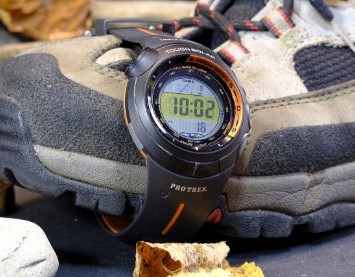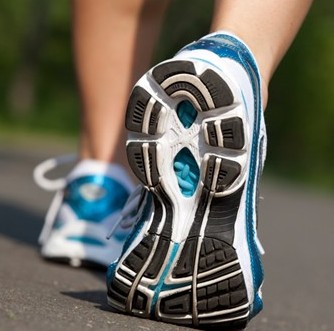Training for the 100
Race walking > Ultra race walks > Training

training FAQs
So HOW do you train for a "100" or 24 hours and what you can do on race day....
Follow the advice below and read the advice on racing, training, health and nutrition - written by experienced ultra distance athletes and coaches. Check out the fixture list and get walking!
Q. How do I train for the 100?
- Read articles by the experts! and by seasoned Centurions...
- Join a race walking club and enjoy the benefits of camaraderie - advice - someone to train and race with - and so much more.
- A point to remember is that, time out on your feet is always good endurance training - no matter the speed you are walking.
Whether training or racing, here are a few tips....
Q. what do I wear
- Anything that is comfortable and no matter the distance make sure that nothing chafes - seams, labels, fasteners, etc.
Whilst you have 24 hours, you really don't want to waste time changing clothes. Wear lightweight man-made fibres as they dry out quicker than cotton and wool. - You will need a variety of clothing - no matter where the race is. Weather is always unpredictable...

If it is a "summer" event: vest/T shirt, shorts plus long leggings for the night (this is usually permissible under race walking rules); thermal or lightweight fleece top or sweatshirt; waterproof top and leggings; hat, sunglasses, sunscreen (well you never know!); spare socks/thin gloves. Err on overkill and take at least 2 of everything - right down to underwear.
Top Tip: Kit List
Keep a "kit list" (eg as a spreadsheet) for your races and amend as necessary after each race: eg "didn't wear this" or "could have done with that" etc. Especially if you are going to make a habit of doing these 100s!
World Athletics introduce new shoe rules (February 2021)
All competitions on the track, road and cross country held under UKA Rules are subject to the application of the rule to ensure fair competition and, should records be achieved, then those records can be ratified.
UKA have produced a table below which shows the thickness of sole currently allowed across the complete range of athletics events. UKA World Athletics Shoe Rule FAQs April 2021
Whilst the table is from UK Athletics - the rules are from World Athletics - which affect us all.

Q. what should I eat and drink and how often?
Some walkers eat shed loads; others don't! And much depends on personal preferences. Everyone has their own idea of what (and what not) to eat and drink before, during and after a long distance event. What suits one individual may not suit another, below are a few tips:
- Every stomach reacts differently and you need to find out in training what suits you.
- Drinking enough before the event will get your system into gear.
- Protein as well as carbohydrate intake is needed in ultra events along with appropriate fats such as fish oils and vitamin and mineral supplements
- Only drink fizzy drinks to clear wind as they make you feel full; do not have too much tea or coffee as they are diuretic.
Food: Remember that it takes time to digest food. - it can take anywhere between 15-30 minutes for food input to be useful on a long training session depending on how much and what you have eaten. Don't binge on just carbohydrates - you will just get bloated. When out training, you should experiment of what you can eat and tolerate. Not all race organisers provide a vast array of food - these days they expect athletes to bring their own and/or have a support crew to manage your provisions. So experiment in training - not on race day!
Your digestion system may shut down especially in a hard training session or long race making food harder to digest.
Many 24 hour races in France do provide electric power points for support crews to plug in a kettle and microwave. But you will always get a hot drink, soup etc, during the night from the feeding station and plenty of snacks.
Your digestion system may shut down especially in a hard training session or long race making food harder to digest.
Many 24 hour races in France do provide electric power points for support crews to plug in a kettle and microwave. But you will always get a hot drink, soup etc, during the night from the feeding station and plenty of snacks.
Just in case the feeding station is empty or the food is not to your liking... take bananas, Tuc biscuits, bread, cheese, jam... and some form of carbohydrate which is a must to keep you going for 24 hours. It can be rice pudding, potato (mashed or whole), pasta... all these slip down easily. A bit of protein such as cheese, also goes a long way.
When out training no such luxuries! You may have to carry food and drink in a back pack. Engergy gels, drinks and bars may come in handy. Gels or carbohydrates and electrolyte drinks come in tablet or powders to premix with water. Fluids are generally absorbed into the blood stream from the stomach far easier than solids, so they are instantly useful.
MORE on nutrition for athletes>

Q. drink?
- water, coke, lemonade...these are all popular choices, as are commercial products such as isotonic drinks. Do test these drinks out first on a long training session.
A hot cup of something during a wet or cold night can work wonders - soup, hot chocolate, tea, coffee - are a great help - Make sure you are well hydrated starting the day before race day. This may, of course, depend on the length of the lap and the positioning of drinks stations. If it's a short lap, drink every 30 minutes or so ...but don't over hydrate. The general rule, is that if you start to feel thirsty - it's too late.
- Also make sure that during very hot days, the drink is not ice cold - this can have an adverse affect on your stomach.
- Lemonade or peppermint tea are very good when suffering from stomach upsets. Coke (coca cola) is sometimes more effective watered down or flat.

training injuries and first aid
the most common issues walkers suffer from during a 100 miles/24 hour race are blisters (feet) and muscular problems - mostly quads...
Blisters
Many race organisers do provide excellent paramedics or first aiders who know what they are doing - especially when it comes to treating blisters.
But do make sure you take your own blister kit just in case.
If you do tend to get annoying "hot spots" on your feet whilst training - use something like Compeed before you start the race. And, if you tend to blister in the same place on every race, try taping up toes, heels, balls of feet, etc, before you start. But do try it all out in a training session first.
Muscles
Kinesio tape is also good for those problem muscular issues.
MORE on injuries >
Short on time?
High Intensity Training (HIIT)
Work out from home
 During the 2020 -21 lockdowns it was very difficult to motivate ourselves to go out and do the same old training routes day after day. So we needed to add a bit of variety to our training schedule.
During the 2020 -21 lockdowns it was very difficult to motivate ourselves to go out and do the same old training routes day after day. So we needed to add a bit of variety to our training schedule.And as we have come out of those pandemic years - there is no need to stop doing this.
A well-structured 15-20 minute workout can be really effective if you haven't the time or motivation for a long training session.
Loss of muscle mass is inevitable as we get older - so add some resistance and balance training to your schedule.
Resistance training (such as press-ups, or resistance bands) is important.
Start adding balance exercise - as our balance is affected as we get older. Try standing on one leg - hold onto a chair at first, but as your ankle and legs get used to this balancing act - add a few more minutes each session.
In a living room, it is easy to do a routine where you could alternate between doing a leg exercise and an arm exercise. For race walking we need arm muscle as well a leg muscle.
Doing six or eight exercises, this effect of going between the upper and lower body produces a pretty strong metabolism lift and cardiovascular workout.
Try squats, half press-ups, lunges, tricep dips and glute raises. These take no more than 15-20 minutes and only require a chair for the tricep dips – although dumbbells can be helpful, too.